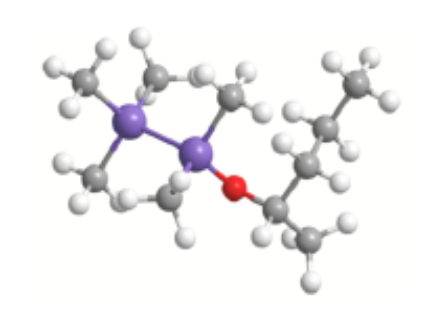


Indian Journal of Science and Technology
Year: 2023, Volume: 16, Issue: 15, Pages: 1126-1134
Original Article
Dinakaran Vasumathi1, Swaminathan Senguttuvan2*
1Department of Chemistry, Vivekananda College of Arts and Science for Women, Sirkali, (Affiliated to Bharathidasan University, Thiruchirappalli - 24), 609110, Tamilnadu, India
2PG and Research, Department of Chemistry, Thiru.Vi. Ka. Government Arts College, Thiruvarur (Affiliated to Bharathidasan University, Thiruchirappalli - 24), 609110, Tamilnadu, India
*Corresponding Author
Email: [email protected]
Received Date:12 February 2023, Accepted Date:15 March 2023, Published Date:17 April 2023
Objectives: To identify the major phytocompounds of Physalis longifolia leaf methanol extract and assess the ovicidal and larvicidal toxicity of target medical and agronomic pests of Aedes aegypti, Culex quinquefasciatus, Spodoptera litura and Helicoverpa armigera eggs and larvae. Methods: In this study, the phyto-compounds identification was made by GC-MS analysis. The selected phyto-compounds were applied towards eggs were tested various concentrations 4-16mg/ml and larvae were tested various concentrations 2- 200mg/ml of medical and agronomic pests. Overall mortality was examined using probit analysis to calculate LC50/LC90. Findings: The most common an Indian medicinal flora, Physalis longifolia leaf methanol extract and its derived major phyto-bioactive constituents Fumaric acid, di(1-adamantylmethyl) ester and 2-Pentamethyldisilanyloxypentane were authentically isolated by GCMS analysis. By phyto-chemical screening, more numbers of bio-active phytochemicals were occupied in high polar leaf extract. P. longifolia leaf methanol extract and its derived major phyto-bioactive constituents Fumaric acid, di(1-adamantylmethyl) ester and 2-Pentamethyldisilanyloxypentane were showed topper eggs toxicity above 90% which reached nearly 100% and the larval toxicity of LC50/ LC90 values were 11.01/18.73, 10.56/ 17.90, 14.19/ 26.59, 14.88/ 27.80 mg/ml and 10.91/ 18.75, 10.70/ 18.26, 15.77/ 29.29 and 14.86/26.55 mg/ml against the medical and agronomic pests of Ae. aegypti, Cx. quinquefasciatus, S. litura and H. armigera, respectively. Novelty: The biotoxicity of selected P. longifolia leaf methanol extract and its derived major phyto-bioactive constituents were well effective, environmental friendlier and produced least toxicity on non-target organisms. The medicinal flora, P. longifolia originated phyto-products could be a valuable farmer and ecofriendly bio-toxic weapon on medical and agronomic pests which promotelesser susceptible on non-target organisms.
Keywords: Phytoproducts; Ecotoxicity; Physalis longifolia; Medical pest; Agronomic pest
© 2023 Vasumathi & Senguttuvan. This is an open-access article distributed under the terms of the Creative Commons Attribution License, which permits unrestricted use, distribution, and reproduction in any medium, provided the original author and source are credited. Published By Indian Society for Education and Environment (iSee)
Subscribe now for latest articles and news.